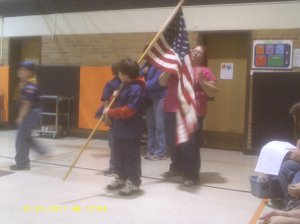Almost every child LOVES COOKIES. We all know this… entire marketing campaigns are based on this fact in the fall of the year when the kiddies go back to school, the weather starts cooling and folks start thinking about football, homecoming games, treat-laden parties and the major baking holidays.
Homeschooling moms have a big advantage over their public school teaching counterparts in the area of math to keep their students engaged in lesson material and at the same time give their youngsters a fun break from the day-to-day on-paper math assignments. The homeschooling mother (or father, or grandparent… whatever the case may be) has: #1. a pantry containing food ingredients #2. cooking equipment and facilities ever present when at home (cooking in the car is probably NOT a good option unless your home is also your mode of transportation) #3 a handy supply of cookbooks, recipe card or perhaps recipes memorized from years of experience. #4 As a parent, IF your children have any food issues such as allergies, you KNOW what they are and unless the result of your math lesson is going to end up as snack for the next scout meeting or church potluck, you don’t have to worry about anybody else’s allergies except your family’s.
I don’t know about your kids, but mine love the process of making cookies almost as much as they love eating them. That said, our family does have a few food limitations among our children: corn/corn syrup, gluten, milk protein, soybeans, bananas, strawberries and avocados. With that in mind, we do quite a bit of our own baking anyway. Baking is a great way to make math fun, particularly when trying to teach fractions.
Today’s math skill (new) was adding fractions and to this end, we used 1/3 and 1/2 measuring cups and a 1/4 tsp measuring spoon (okay, I couldn’t find any of the others anyway… but we made it work for us!) to measure ingredients. We also ended up writing our own recipe for these cookies as we went along and the oldest wrote it down on recipe cards. Life Skills Lesson: Bake a healthy, low-sugar and yummy “go-to” cookie that even my future 20-something possibly bachelor sons could make on their own without too much difficulty for their lunchboxes and such when they are grown and on their own. (Clever Mama!) Bonus Lessons: Creative Writing and Penmanship practice … check!
Chocolate Peanut Butter Peanut Cookies
1/2 + 1/2 + 1/2 cups Creamy Peanut Butter
1/2+ 1/2 + 1/2 + 1/2 cups brown sugar (or 50/50 blend of brown sugar/splenda or brown sugar/stevia)
1/4 + 1/4 tsp salt
1/4 + 1/4 + 1/4 + 1/4 tsp vanilla
2 large eggs (or 3 medium… that’s what I happened to have)
1/3 cup cocoa powder (baking, not hot chocolate mix)
1/4 + 1/4+ 1/4+ 1/4 + 1/4 + 1/4 tsp baking powder
1/3 + 1/3 cup of room temp. leftover coffee (adjust as needed depending on the moisture of your flour)
1/2+ 1/2+ 1/2 cups whole millet flour
1/2+ 1/2+ 1/2+1/2+ 1/2+ 1/2 cups Gluten-Free all purpose flour (use your favorite blend) Adjust flour as needed if your cookie dough seems too wet from the coffee
1/3 cup Enjoy Life Mini Chocolate Chips (okay, this was all I had left of the bag)
1/3+ 1/3 + 1/3 cups chopped peanuts
1/2 cup Sugar in a small bowl (add more if needed
1. Cream together in a large mixing bowl, the peanut butter and brown sugar.
2. Add the eggs, salt and vanilla and stir in thoroughly.
3. Stir in the coffee (it will look very loose almost like pancake batter at this point.)
4. In another mixing bowl mix the flours, cocoa powder and baking powder.
5. Add the flour mixture to the wet ingredients 1/3 or so at a time. Mixing well between additions.
6. Stir in the chocolate chips and peanuts.
7. Cover the bowl with plastic wrap or foil and chill for at least 2 hours.
8. After the dough is chilled, Preheat the oven to 350 F.
9. Remove the dough from your fridge and scoop out walnut-sized balls of dough. Roll the dough in sugar (as you would regular peanut butter cookies) and place on your baking sheet.
10. Using a fork, lightly squish the cookie dough balls in a criss-cross fashion (again like regular peanut butter cookies).
11. Place your cookie sheets in the oven and bake for 10-12 minutes (use your judgement here, if you like soft cookies take them out when they look well set, if you like a crunchier cookie leave them a couple minutes longer, but plan to keep a close eye on them so they don’t burn.
12. Cool the cookies on the baking sheet for about 5 minutes before transferring them to a cooling rack or plate.
13. Let the kiddies enjoy the results of their math lesson, but don’t forget to save some for dad’s lunch too!
For holidays you can use colored sugar or roll them in sprinkles to dress them up a bit.
For Extra Credit, check with your 4-H and Scout leaders to see if this math project can count toward a 4-h project (perhaps and Educational Display in Baking/cooking as part of a cookbook you child writes out him/herself) or for a cooking belt loop in Cub-Scouts/Badge in Girl Scouts.
(* I apologize for lack of photos at the present time, my camera bit the dust after the 4-H photography clinic we had in late July and we haven’t had the funds to replace it just yet. I will bake these cookies again another day after we DO replace the camera, edit and re-post this again in an updated version with photos.)












2 Responses to Salt Dough Again
fun!
Wow! This is great stuff!
“If people were concerned about what really matters in life,
there would be a shortage of craft supplies in the stores!
Blessings!
Julia</strong)